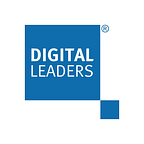Connected Spaces: bringing it all together
Written by David Hart, Co-Founder of ScreenCloud, Codegent & Tepilo
Accenture identified which of the companies investing in innovation were seeing the fastest rates of growth and whether they shared anything when it came to the application of their investments. Turns out there were three things that they were all:
- Change-orientated: meaning that any innovation was structured to significantly change the way the organisation worked, rather than tinkering at the edges. And investment was seen as something that was there to create company-wide benefits rather than small incremental improvements.
- Outcome-led: where organisations think of innovation that supports their longer-term objectives, rather than solving short-term ‘nice-to-haves’. The most successful companies make sure that the initiatives support their North Star Metric. Many successful companies use screens to visualise and communicate their objectives and values in an ongoing and consistent way.
- Disruption-minded: recognising that disrupting work practice and industry norms, even their own, can give businesses an edge. Where companies can make it easier to innovate but also for that innovation to become a reality faster, then they are winning out against their competition.
The smarter companies are lifting the data out of the silos, using rules-based logic to combine it with other data, then using screens to make it visible. Here are some great examples (we’ve had to anonymise them, but they are all real):
- The advertising agency using a meeting room booking system to improve its lobby experience
In itself, replacing a paper-based meeting room system with a digital one is kind of cool, but not exactly revolutionary. In many ways, it could be argued that if you are replacing paper with an app it’s actually less convenient for the users because walking up to a meeting room and scribbling their name on a sheet is quicker than finding the app and filling in some form fields.
But if you can apply some rules-based logic to the systems and knowledge they already have within the agency, that simple act of booking a meeting room can automatically trigger a series of other events in the physical environment.
For example, by making a booking, we know the names of the people coming and the time they should be arriving, so we can show a simple welcome message on the desk in reception when they are signing in.
But we know more than just their names: we also know their email addresses. With a simple look-up tool we can determine the industry they work with and cross-reference that with any case studies that are also tagged with the same type and show those in the lobby before and after the meeting. This means that they get a much more relevant experience than they would get if they were sat there watching CNN on mute.
2. The High Street Bank looking to drive value through employee training
A large High Street Bank have identified that innovation had to support their company-wide North Star Metric of customer satisfaction. An important way to achieve that was through having well-trained talent within the business.
They recognised that just sending staff an email with a list of courses they could attend, or listing them on an intranet that nobody looked at, wasn’t going to cut it. The problem with email is that it’s too busy: and the problem with most intranets is that people only go there when they are actively looking to find something.
Instead, they sought to unlock the value within their data by surfacing it in a way that would cut through the noise and register with the staff they were looking to influence.
They used public screens to surface information about training courses that were available, as well as social proof in the form of testimonials from previous attendees.
They also made heroes of staff who were contributing the most to their objective of delivering best in class customer service, by publicly acknowledging their achievements.
3. The major mobile phone company looking to reinvent the retail experience
A major mobile phone company is changing the physical retail experience in the US. Their vision of the future includes till-less stores and a highly-knowledgeable sales teams.
Leaderboards and regional sales comparisons provide a clear message about what the company values.
All of this is supported by screens in the back office that representatives see as they are getting ready to start their shifts, or taking a coffee break.
The screens replace tired old white boards and Post-It notes, and can pull through regional sales stats in real-time, “meet-the-team” introductions to new staff who have joined recently, customer feedback, staff incentives, updates on product promotions, as well as count-downs to new product-launches. All managed centrally and updated dynamically.
Originally posted here
Originally published at digileaders.com on November 29, 2018.
